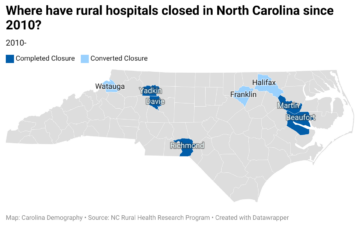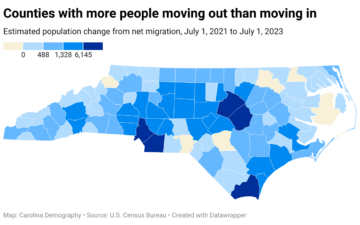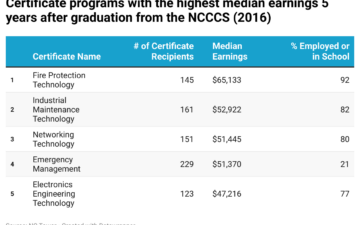Background
The benefits of tourism in North Carolina are very apparent:
But the costs of tourism are less clear. Standard population measures don’t necessarily account for populations that ebb and flow — as they tend to do in resort and beach towns. The North Carolina Association of Resort Towns and Convention Cities wanted to better understand some of the unique planning challenges their constituents faced, including:
They asked Carolina Demography to identify and analyze data to better understand the experiences of highly visited, smaller communities throughout the state.
Approach
We looked at three locations:
While these locations vary significantly in size and the characteristics of their parent county, they share one major factor in common: they each have economics significantly impacted by tourism.
We collected data from a variety of sources, looking at factors like emergency services usage, water demands, housing, local employment, and local expenditures and investments. We also interviewed people who worked in these locations.
“The mis-aligned value system among seasonal residents, [tourists], local workforce, vacation property owners, merchants, local government, and membership organizations can create quite difficult dynamics to manage.” – Kent Graham, Fire Chief of Blowing Rock
Results
Our research made clear that you can’t look at the benefits of tourism without also accounting for the cost of infrastructure — and that it is a difficult dynamic to manage. The results were presented in both a report and presentation, which the North Carolina Association of Resort Towns and Convention Cities used to determine better ways to support their constituents.
North Carolina Association of Resort Towns and Convention Cities
To determine the costs associated with seasonal populations

Since 2010, there have been 149 closures of rural hospitals across the US. These closures have taken place in 34 of the 50 states. Eight of these closures took place in North Carolina. What is a rural hospital? The NC…

Last week, the U.S (United States). Census Bureau released 2023 county population estimates. These annual estimates tell us how county populations in North Carolina have changed over the course of a year: in this case, between July 1, 2022 and…

Deciding which educational pathway to pursue is often a daunting decision for a high schooler transitioning to postsecondary education. There are many questions a student must ask. Do I want to pursue a credential or a degree awarding program? What…
Your support is critical to our mission of measuring, understanding, and predicting population change and its impact. Donate to Carolina Demography today.